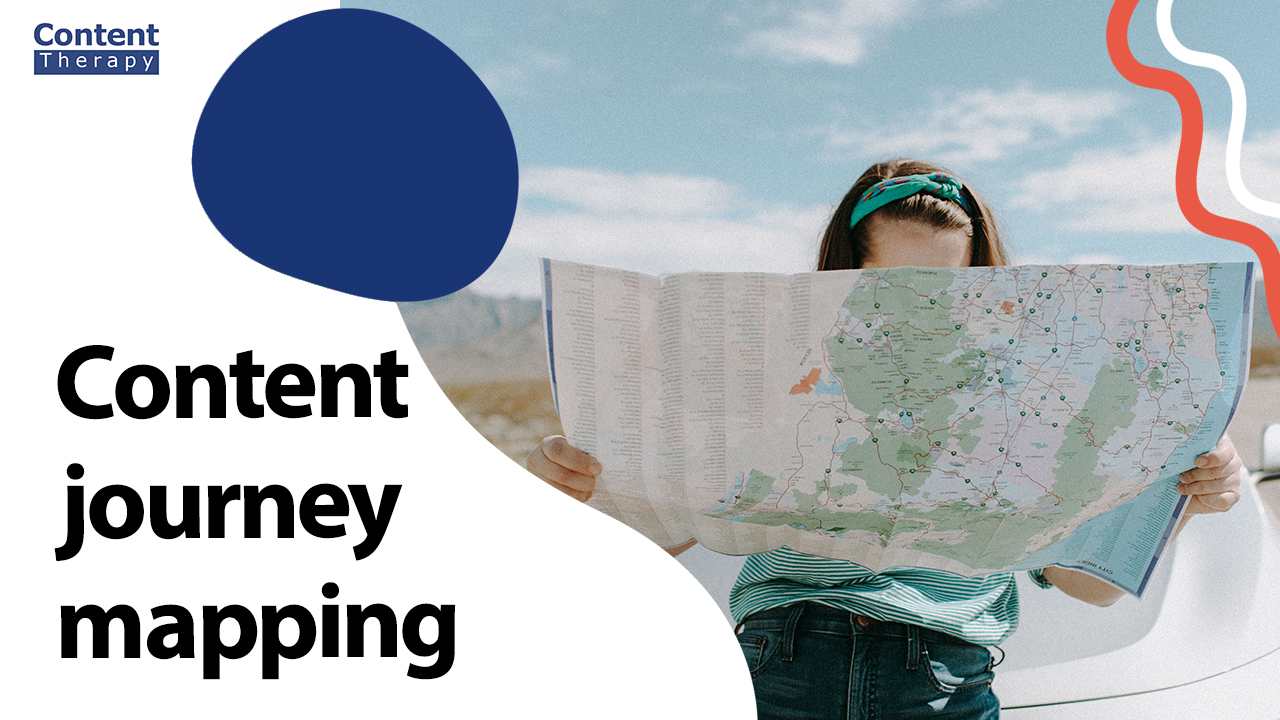Content Journey Mapping is a strategic process that involves analyzing the customer’s journey through the content provided by a business. It involves identifying the various touchpoints and interactions that the customer has with the content and mapping them out in a structured way. By doing so, businesses can gain a better understanding of their audience’s needs and preferences, identify gaps in their content strategy, and optimize their marketing efforts to provide a more personalized and engaging experience for their customers. This article will provide an overview of content journey mapping, its importance, and how businesses can use it to improve their content marketing strategy.
What is Content Journey Mapping and Why is it Important?
Content Journey Mapping is a process that involves mapping out a customer’s journey through the content provided by a business. It is a strategic tool used by businesses to analyze the various touchpoints and interactions that customers have with their content, from the initial discovery stage to the final conversion. The process involves identifying customer needs and preferences, analyzing data to gain insights into their behavior, and using this information to optimize the content marketing strategy.

Content Journey Mapping is essential for businesses because it provides a comprehensive view of the customer experience. By mapping out the journey, businesses can identify gaps in their content strategy, address pain points in the customer journey, and create a more personalized and engaging experience for their audience. Additionally, it allows businesses to measure the effectiveness of their content marketing efforts and make data-driven decisions to improve their overall marketing strategy. By understanding the customer’s journey, businesses can provide content that is relevant, valuable, and timely, leading to increased customer satisfaction, loyalty, and ultimately, conversions.
Understanding Your Audience: The First Step in Content Journey Mapping
Understanding your audience is the first and most crucial step in content journey mapping. To create an effective content journey map, you need to have a clear understanding of who your target audience is, what their needs and preferences are, and how they engage with your content.
The first step in understanding your audience is to conduct market research. This can involve analyzing demographic data, conducting surveys or focus groups, or using customer analytics tools to gain insights into their behavior. By doing so, you can identify key characteristics of your target audience, such as age, gender, income level, interests, and pain points.
Once you have a better understanding of your audience, you can start to create buyer personas, which are detailed profiles of your target audience. Buyer personas help you understand your customers’ goals, challenges, and motivations, allowing you to create content that resonates with them.
When creating a content journey map, it is also important to consider the different stages of the customer journey, such as awareness, consideration, and decision-making. By understanding the customer’s journey and how they engage with your content at each stage, you can create content that is tailored to their specific needs and preferences.
In summary, understanding your audience is critical to creating an effective content journey map. By conducting market research, creating buyer personas, and considering the customer journey, you can create content that resonates with your target audience and ultimately drives conversions.
Mapping Your Content Journey: Tools and Techniques
Once you have a clear understanding of your audience, the next step in content journey mapping is to start mapping out the customer journey through your content. There are various tools and techniques that you can use to create an effective content journey map.
- User Flow Diagrams: User flow diagrams are a visual representation of how a user interacts with your content, from the initial discovery stage to the final conversion. They help you identify the different touchpoints in the customer journey, such as social media, email, or your website, and map out the steps that users take to reach their goals.
- Customer Journey Maps: A customer journey map is a detailed illustration of the customer experience, showing the different stages of the journey and the emotions and actions associated with each stage. Customer journey maps help you identify pain points, opportunities for improvement, and areas where you can create a more personalized experience for your audience.
- Content Audit: A content audit involves reviewing all of the content that you have created and identifying gaps and opportunities for improvement. By analyzing your existing content, you can identify areas where you need to create new content or update existing content to better meet the needs of your audience.
- Analytics Tools: Analytics tools such as Google Analytics can help you gain insights into your audience’s behavior, such as how they engage with your content, what pages they visit, and how long they spend on your website. This data can help you optimize your content marketing strategy and create a more personalized experience for your audience.
- Persona Scenarios: Persona scenarios involve creating hypothetical scenarios based on the behavior of your buyer personas. By putting yourself in the shoes of your audience, you can identify pain points and opportunities for improvement in your content journey.

In summary, mapping your content journey requires a combination of tools and techniques, such as user flow diagrams, customer journey maps, content audits, analytics tools, and persona scenarios. By using these tools, you can gain a deeper understanding of your audience and create content that resonates with them at every stage of the customer journey.
Identifying Gaps and Opportunities in Your Content Journey
Identifying gaps and opportunities in your content journey is a critical step in optimizing your content marketing strategy. By analyzing the customer journey through your content, you can identify areas where you need to improve your content, create new content, or optimize your marketing efforts. Here are some key steps to help you identify gaps and opportunities in your content journey:
- Conduct a Content Audit: A content audit involves reviewing all of the content that you have created and identifying gaps and opportunities for improvement. By analyzing your existing content, you can identify areas where you need to create new content or update existing content to better meet the needs of your audience.
- Analyze Customer Feedback: Customer feedback is a valuable source of information that can help you identify areas for improvement in your content journey. By soliciting feedback from your audience, you can identify pain points and areas where you can create a more personalized experience for your customers.
- Monitor Analytics: Analytics tools such as Google Analytics can provide valuable insights into how your audience engages with your content. By monitoring metrics such as bounce rates, time on site, and conversion rates, you can identify areas where you need to improve your content and optimize your marketing efforts.
- Identify Content Gaps: Content gaps are areas where you are not providing the content that your audience needs. By analyzing your buyer personas and customer journey maps, you can identify content gaps and create new content to meet the needs of your audience.
- Optimize the Customer Journey: The customer journey through your content should be seamless and personalized. By analyzing the different touchpoints in the customer journey and identifying pain points, you can optimize the journey and create a more engaging experience for your audience.
In summary, identifying gaps and opportunities in your content journey requires a combination of strategies, such as conducting a content audit, analyzing customer feedback, monitoring analytics, identifying content gaps, and optimizing the customer journey. By identifying gaps and opportunities, you can optimize your content marketing strategy and create a more personalized and engaging experience for your audience.
How to Use Content Journey Mapping to Improve Your Content Strategy
Content journey mapping is a powerful tool that can help you improve your content strategy by gaining a deeper understanding of your audience and creating content that resonates with them at every stage of the customer journey. Here are some key steps to help you use content journey mapping to improve your content strategy:

- Define Your Goals: The first step in using content journey mapping to improve your content strategy is to define your goals. What do you want to achieve with your content marketing efforts? Are you looking to increase brand awareness, generate leads, or drive conversions? By defining your goals, you can create content that is aligned with your business objectives.
- Understand Your Audience: To create content that resonates with your audience, you need to understand their needs, preferences, and pain points. By developing buyer personas and customer journey maps, you can gain a deeper understanding of your audience and create content that speaks to their needs at every stage of the customer journey.
- Map Your Content Journey: Once you have a clear understanding of your audience, the next step is to map out the customer journey through your content. Use tools such as user flow diagrams and customer journey maps to identify the different touchpoints in the customer journey and map out the steps that users take to reach their goals.
- Identify Content Gaps and Opportunities: Analyze your existing content to identify gaps and opportunities for improvement. Are there areas where you need to create new content? Are there opportunities to optimize your existing content to better meet the needs of your audience? Use analytics tools and customer feedback to identify areas for improvement.
- Optimize Your Content Strategy: Based on your analysis, optimize your content strategy by creating new content, updating existing content, and optimizing the customer journey through your content. Monitor analytics and customer feedback to track your progress and make ongoing improvements.
In summary, using content journey mapping to improve your content strategy requires a combination of strategies, such as defining your goals, understanding your audience, mapping your content journey, identifying content gaps and opportunities, and optimizing your content strategy. By using these strategies, you can create a more personalized and engaging experience for your audience and achieve your business objectives.
Using Metrics to Measure the Success of Your Content Journey Mapping
Measuring the success of your content journey mapping is essential to determine whether your content marketing efforts are meeting your business objectives. Here are some key metrics you can use to measure the success of your content journey mapping:
- Traffic: Measuring the amount of traffic your content generates is an important metric for evaluating the effectiveness of your content journey mapping. Use tools such as Google Analytics to track the number of visitors to your website, blog, or landing pages.
- Engagement: Measuring engagement is critical to determining whether your content is resonating with your audience. Metrics such as time on site, page views, and social shares can provide valuable insights into how your audience is engaging with your content.
- Conversions: Conversions are the ultimate measure of success for content marketing. By tracking metrics such as leads generated, sales, or sign-ups, you can determine whether your content is driving the desired actions from your audience.
- Customer Lifetime Value: Customer lifetime value (CLV) is the amount of revenue a customer generates over the course of their relationship with your business. By tracking CLV, you can determine whether your content is effectively nurturing leads and driving long-term customer loyalty.
- Cost-Per-Acquisition (CPA): CPA measures the cost of acquiring a new customer or lead. By tracking CPA, you can determine whether your content marketing efforts are cost-effective and delivering a positive return on investment (ROI).
- Customer Satisfaction: Customer satisfaction is a key indicator of whether your content is meeting the needs of your audience. Use surveys or feedback tools to gather customer feedback and measure satisfaction levels.
In summary, using metrics to measure the success of your content journey mapping requires tracking metrics such as traffic, engagement, conversions, customer lifetime value, cost-per-acquisition, and customer satisfaction. By tracking these metrics, you can evaluate the effectiveness of your content marketing efforts and make data-driven decisions to improve your content strategy.
Collaboration and Communication in Content Journey Mapping
Collaboration and communication are crucial to successful content journey mapping. Here are some key factors to consider:

- Cross-functional Collaboration: Content journey mapping involves different teams and stakeholders, including marketing, sales, customer support, and product development. By fostering cross-functional collaboration, you can ensure that everyone is aligned on the goals and objectives of your content marketing efforts.
- Clear Communication: Clear communication is essential for successful content journey mapping. Ensure that everyone involved in the process understands their role and responsibilities and is kept up-to-date on the progress and outcomes of the mapping process.
- Shared Tools and Resources: Provide access to shared tools and resources, such as customer feedback, analytics, and content calendars, to ensure that everyone has access to the same information and can collaborate effectively.
- Feedback and Iteration: Content journey mapping is an iterative process that requires ongoing feedback and refinement. Encourage team members to provide feedback and suggestions for improvement and be open to making changes based on the insights gained.
- Accountability and Ownership: Ensure that team members are held accountable for their responsibilities and that there is a clear sense of ownership over the success of the content journey mapping process.
In summary, collaboration and communication are essential for successful content journey mapping. By fostering cross-functional collaboration, ensuring clear communication, providing shared tools and resources, encouraging feedback and iteration, and promoting accountability and ownership, you can create a collaborative environment that leads to more effective content marketing efforts.
Content Journey Mapping for Different Types of Businesses
Content journey mapping can be applied to different types of businesses, whether they are B2B or B2C, and regardless of the industry. Here are some examples of how content journey mapping can be used in different types of businesses:
- B2B Businesses: In B2B businesses, content journey mapping can be used to identify the stages of the buyer’s journey and create content that addresses the pain points and challenges of the target audience. The mapping process can help identify the types of content that are most effective at each stage of the journey, such as whitepapers, case studies, webinars, and demos.
- B2C Businesses: In B2C businesses, content journey mapping can be used to create content that resonates with the target audience at each stage of the customer journey. For example, a fashion brand may create content that highlights the latest fashion trends, provides styling tips, and showcases customer reviews to help potential customers make purchasing decisions.
- E-commerce Businesses: E-commerce businesses can use content journey mapping to create content that helps drive sales and increase customer loyalty. For example, a skincare brand may create content that educates customers about the benefits of its products, provides tips on how to use them, and offers personalized recommendations based on the customer’s skin type.
- Service-based Businesses: Service-based businesses can use content journey mapping to create content that establishes thought leadership and builds trust with potential customers. For example, a financial services firm may create content that educates customers about investment strategies, provides market insights, and offers personalized advice based on the customer’s financial goals.
In summary, content journey mapping can be used by different types of businesses to create content that resonates with their target audience at each stage of the customer journey. By understanding the unique needs and pain points of their audience and creating content that addresses those needs, businesses can drive engagement, build trust, and increase sales and customer loyalty.
Challenges and Common Pitfalls in Content Journey Mapping
Content journey mapping can be a powerful tool for improving your content marketing strategy, but there are also several challenges and common pitfalls to watch out for. Here are some of the most common challenges and pitfalls to be aware of:

- Lack of Resources: Creating a comprehensive content journey map can be a time-consuming and resource-intensive process. Without adequate resources, it can be difficult to collect and analyze the data needed to create an accurate map.
- Incomplete Data: The accuracy of your content journey map depends on the quality and completeness of the data you collect. Incomplete or inaccurate data can lead to inaccurate insights and poor decision-making.
- Insufficient Collaboration: Effective content journey mapping requires input from multiple stakeholders, including marketing, sales, customer support, and product development. If there is insufficient collaboration among these teams, it can be difficult to create a comprehensive map that accurately reflects the customer journey.
- Focusing Too Much on the Map: While the content journey map is an essential tool, it is important to remember that it is only a snapshot of the customer journey at a particular point in time. Focusing too much on the map can lead to a lack of flexibility and an inability to adapt to changes in the customer journey over time.
- Ignoring the Metrics: Metrics are essential for measuring the success of your content journey mapping efforts. Failing to track and analyze the right metrics can lead to ineffective content marketing strategies and missed opportunities.
In summary, content journey mapping can be challenging, but by avoiding these common pitfalls and challenges, you can create an accurate and effective map that helps improve your content marketing strategy. By dedicating adequate resources, collecting complete and accurate data, fostering collaboration among stakeholders, remaining flexible, and tracking the right metrics, you can create a successful content journey mapping process that drives engagement and increases sales.
The Future of Content Journey Mapping: Trends and Predictions.
As the digital landscape continues to evolve, so too will the practice of content journey mapping. Here are some trends and predictions for the future of content journey mapping:
- Greater Emphasis on Personalization: As customers become increasingly accustomed to personalized experiences, content journey mapping will become even more important for tailoring content to the unique needs and preferences of each customer.
- Integration with Artificial Intelligence: As AI technology continues to improve, content journey mapping will become more sophisticated, with AI algorithms helping to analyze data, identify patterns, and provide more accurate insights.
- Increased Focus on Omnichannel Experiences: With customers interacting with brands across multiple channels, content journey mapping will need to account for the different touchpoints and channels that customers use, providing a seamless experience across all touchpoints.
- Use of Interactive Content: Interactive content, such as quizzes, surveys, and assessments, will become increasingly popular, providing a more engaging and personalized experience for customers and providing valuable data for content journey mapping.
- Greater Collaboration Across Teams: As content journey mapping becomes more sophisticated, it will require greater collaboration across different teams, such as marketing, sales, and customer support, to ensure a comprehensive and accurate map of the customer journey.
- Increased Focus on Customer Feedback: Customer feedback will become an even more important source of data for content journey mapping, with businesses leveraging customer insights to create content that addresses their pain points and preferences.

In summary, the future of content journey mapping is likely to be characterized by greater personalization, integration with AI technology, a focus on omnichannel experiences, the use of interactive content, increased collaboration across teams, and a greater emphasis on customer feedback. By staying up-to-date with these trends and predictions, businesses can continue to use content journey mapping to improve their content marketing strategies and drive engagement and sales.
In conclusion, content journey mapping is a powerful tool for improving your content marketing strategy, providing insights into the customer journey and helping you create personalized, engaging content that resonates with your audience. By understanding your audience, mapping your content journey, identifying gaps and opportunities, and using metrics to measure success, you can create a comprehensive and effective content journey map that drives engagement and increases sales. And as the digital landscape continues to evolve, staying up-to-date with the latest trends and predictions for the future of content journey mapping will be essential for maintaining a competitive edge and providing exceptional customer experiences. So start mapping your content journey today and take your content marketing strategy to the next level!
Overall, content journey mapping is a powerful tool for businesses looking to improve their content marketing strategy, drive engagement, and increase sales.
Content journey mapping is the process of mapping out the different touchpoints and interactions that customers have with your brand across their journey, from awareness to conversion and beyond. By creating a visual map of the customer journey, businesses can gain insights into the needs and preferences of their audience, identify gaps and opportunities in their content marketing strategy, and create personalized, engaging content that resonates with their target audience.
Content journey mapping is important for businesses because it provides valuable insights into the customer journey, helping them understand the needs and preferences of their audience and create personalized, engaging content that resonates with their target audience. By mapping out the different touchpoints and interactions that customers have with your brand, you can identify gaps and opportunities in your content marketing strategy, optimize your content for each stage of the customer journey, and ultimately drive engagement and increase sales.
The benefits of using content journey mapping include: A better understanding of your audience and their needs and preferences
Identification of gaps and opportunities in your content marketing strategy
Creation of personalized, engaging content that resonates with your target audience
Optimization of your content for each stage of the customer journey
Improved customer experience and increased customer satisfaction
Increased engagement and conversions
Better measurement of the success of your content marketing efforts through the use of metrics


Leave a Reply